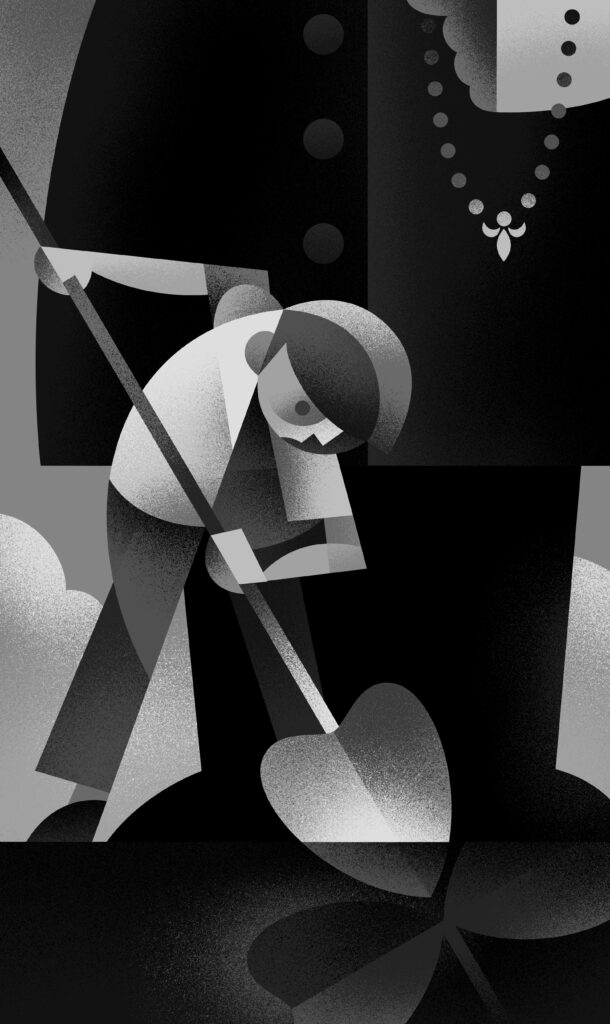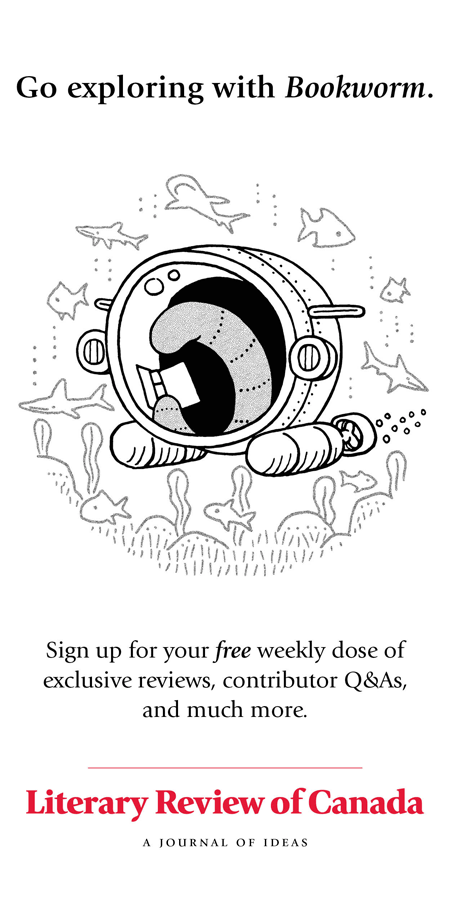Some years ago, on a chilly March day, I paid a visit to Toronto’s Ireland Park. As an Irishman who had made his home in Canada, I was interested in the experience of past generations of Irish immigrants. But the park wasn’t easy to find. Walled off from the city by old Canada Malting silos, it is a tiny patch of grass alongside Lake Ontario. Snow dusted the frozen ground; a bitter wind cut across the water. The place was deserted — a raw, lonely spot that seemed to capture the alienation of stepping onto an unknown shore.
Ireland Park commemorates victims of the Great Famine who arrived in Canada in the mid-nineteenth century. Five bronze figures, ragged and emaciated, seem to stagger toward their future. A pregnant woman clutches her belly; another figure has collapsed on the ground; a gaunt man, arms raised, faces the CN Tower and the gleaming skyscrapers of Bay Street. Here is a universal story of refugees: desperation alongside hope.
The failure of the potato crop caused the deaths of a million people in Ireland. Over a million more emigrated, mostly to Britain, the United States, and Canada. Thousands perished in the disease-ridden holds of notorious “coffin ships.” By the time they reached North America, many of the survivors were gravely ill with “ship’s fever”— typhus — for which there was no cure. Some were cared for at Grosse‑Île, a quarantine station near Quebec City, where over 5,000 died.

Welcomed as labour rather than as family.
Dave Murray
Those who lived made their way across the continent and joined one of the proudest diasporas in the world: about 4.5 million Canadians claim an ancestry that has yielded prime ministers, business tycoons, and distinguished artists. Their success is a source of justifiable pride for Irish immigrants and the country that welcomed them: a collective rags-to-riches tale of despair and ultimate redemption.
But in Finding Molly Johnson, Mark G. McGowan tells a different story — one of exploitation. The University of Toronto history professor’s starting point is “Orphans,” a “Heritage Minute” that romanticizes the welcome offered to Irish children whose parents died en route or were unable to support them. In soft focus and misty lighting, three waifs are met by Catholic clergy and introduced to a Quebec family that will adopt them. At first, they are told they will be given the surname Bélanger, but they beg to keep their Irish names. The bishop magnanimously allows them to do so. The take‑aways: Canadians opened their doors to famine refugees, Quebecers and the Irish have close bonds, and you don’t have to give up your identity when you move to this place.
The famine gave rise to legends on both sides of the Atlantic. In Ireland, where its scars are still raw, it fed nationalism, culminating in the 1916 insurrection and later independence from Britain. For some, the crisis was an act of genocide: this is the central thesis of Tim Pat Coogan’s The Famine Plot, from 2012. It’s a claim embraced by Irish republicans, though it carries little weight with most historians. Canada’s legend is that those émigrés found a warm welcome. Today, Grosse‑Île is a national historic site that commemorates the suffering of victims and the heroism of their caregivers, scores of whom died in the effort. Across Canada, poignant memorials attest to the suffering of refugees and the generous welcome they received.
The truth, in both countries, is more complicated. After quickly dismissing the Irish genocide myth (arguing instead that the famine resulted from a lethal mix of ineptitude and callous libertarianism), McGowan takes aim at the legend of orphaned newcomers in Quebec. They were not adopted, he writes, since no legal framework existed for adoption; they were treated as cheap, sometimes indentured labour; and they were allowed to keep their Irish names not out of generosity but to prevent them from inheriting the land of the families that took them in.
If all this sounds harsh, McGowan tempers it with context. Childhood, he tells us, was not then accorded the special status that it has now: children were seen as little adults and expected to earn their keep. He acknowledges the personal sacrifices of those — clerics, doctors, and nurses — who gave their lives to help the ragged thousands who landed at Grosse‑Île and migrated across Quebec and Canada. But the “Heritage Minute” narrative of benevolent adoption does not stand up to scrutiny; exploitation and abuse would be more accurate.
Why promote such a lie? Whose purpose does it serve? The short documentary was launched in 1991, a time when Quebec nationalism was at its height. McGowan suggests the sixty-second vignette was intended to help defuse the movement and, by showing historic links between Quebec’s francophone population and one of its principal anglophone counterparts, to help foster national unity. He points out that the surnames of the three fictitious children — Johnson, Ryan, and O’Neill — all happen to correspond to provincial politicians who were well known to Quebecers when the film was made.
Whether it was effective is debatable. Four years later, a referendum on independence would come close to dividing the country. Perhaps the “Heritage Minute” convinced a few to vote against leaving, perhaps not. Either way, it serves as a case study of how the powerful can manipulate the past to serve their own ends (the series producer, Historica Canada, is supported by government, corporations, and wealthy donors). They may do so in pursuit of worthy goals, such as keeping a country together, but at a cost. Without putting too fine a point on it, the romanticized “Orphans” story is a lie — maybe a lie in service of a greater truth but still a lie. It obscures the motivations of those who, rather than adopting famine orphans, misused them.
McGowan is measured and thoughtful, and his book is at its best when it shreds the myth of universal generosity toward the vulnerable. In later chapters, though, it becomes bogged down in detailed accounts of the fortunes of specific individuals. These serve to deepen the analysis but risk muddling the larger story.
The Great Famine brought out the best and the worst in Canadians of their time. In our own time, it is impossible to move among the statues of Ireland Park without thinking of today’s refugees from around the world and the exploitation they face here and elsewhere. Finding Molly Johnson is an important account of the vulnerability of migrants — and a fitting reminder not to trust self-serving mythologies.
David Dunne is an Irish Canadian author whose titles include Design Thinking at Work. He is currently writing a book about the Irish border region.

